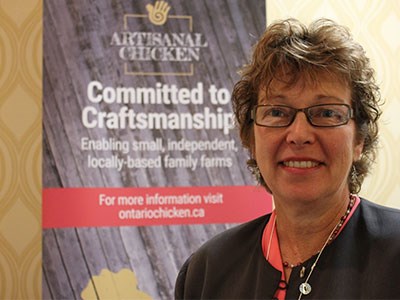Ontario foodies and locavores can look forward to more options when it comes to barbecuing as a new policy ensures they’ll have better access to local chicken.
A new Artisanal Chicken Policy introduced by the Chicken Farmers of Ontario (CFO) will allow small-scale chicken farmers to produce between 600 and 3,000 chickens per year, and sell them at local food stores, farmers markets and to restaurants.
“This new program will help farmers build local food and seasonal markets, and give Ontario consumers more choice and options where they source locally grown chicken,” said Gwen Zellen, vice-president of quality, technical affairs and sustainability for the CFO. “It’s intended to support the growth of the local chicken industry, increase job opportunities across the province, and meet the changing needs of Ontario chicken consumers and market.”
Zellen said more than 100 people applied, with 20 per cent coming from Northern Ontario. The policy is uniquely important to Northern Ontario farmers who have a demand for chicken that far exceeds the current supply.
Peggy Gene Baillie, director of Eat Local Sudbury, said the policy is a step forward for food security. She said regional farmers provide less than one per cent of chicken consumed here.
“It will help us fulfill our mandate to provide local food,” said Baillie. Eat Local Sudbury would be able to sell chickens raised under the policy, and Baillie knows of at least four local producers who have applied. Currently, Eat Local purchases its chicken from a southern Ontario producer that holds a quota.
Small-scale farmers have been limited by the chicken quota for years. It mandates that farmers producing chicken on a commercial scale for off-site sales have to produce at least 14,000 units of chicken, which equals about 90,000 chickens annually.
While farmers across Ontario can currently produce up to 300 chickens for sale, restrictions mean they cannot advertise these chickens, or sell them off site.
Eat Local Sudbury helped advertise a 2012 campaign to raise the quota from 300 to 2,000. The Artisanal Chicken Policy accomplishes what the campaign asked for. Through it, a farmer applies to the CFO, and once approved must abide by the standards set out by the organization.
According to the policy, “artisanal chicken” means a chicken grown and slaughtered locally by an independent person, on a small scale, using traditional methods, and marketed to local businesses.
Katy Ward of Middle River Farm in McKellar has been pre-approved to raise 1,000 chickens under the policy. She had raised chickens under the previous rules, but couldn’t keep up with the demand.
“We raise beef and pork and we did raise our 300 limit, but we’re not allowed to advertise for that, so that was really limiting,” said Ward. “The want was out there, people were asking for local chicken, and I couldn’t provide it.”
Ward said she has at least one whole foods store and a couple of restaurants interested in her product.
The policy permits for flexibility and growth with a reapplication necessary each year through which the producer can ask to raise more chickens. Unlike the standard quota system, it allows producers to slowly scale up based on demand.
“We have less population here so we’re dealing with smaller quotas and that made it tough. With the artisanal one, we felt like we can go in small blocks and make it grow slowly,” she said. “There’s room for movement in there, understanding that as small farmers we don’t have the funding to put all of the quota structure put in before even getting the chickens.”
Ward hopes the move towards more intensive chicken farming will produce enough income to support her husband joining her full time working on the farm, rather than working a full-time job in construction.




